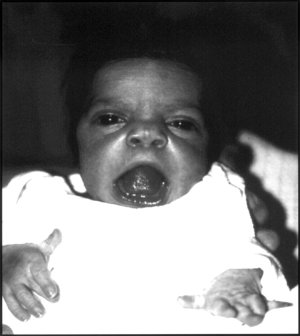Robinow Syndrome, Autosomal Dominant 3

A number sign (#) is used with this entry because of evidence that autosomal dominant Robinow syndrome-3 (DRS3) is caused by heterozygous mutation in the DVL3 gene (601368) on chromosome 3q27.
DescriptionThe clinical description of Robinow syndrome includes mesomelia, normal intellect, genital hypoplasia, and distinctive facial features comprising frontal bossing, prominent eyes, and a depressed nasal bridge, which are collectively referred to as a 'fetal face' (summary by White et al., 2016).
For a discussion of genetic heterogeneity in Robinow syndrome, see RRS (268310).
Molecular GeneticsIn a cohort of 34 individuals with a clinical diagnosis of possible Robinow syndrome, White et al. (2016) performed direct Sanger sequencing of the penultimate and final exons of the DVL1 (601365), DVL2 (602151), and DVL3 genes, and identified 1 patient with a 1-bp deletion within the final exon of DVL3 (601368.0001). Sanger sequencing the penultimate and final exons of DVL1, DVL2, and DVL3 in 17 Robinow syndrome cases from an in-house database identified 4 more patients with mutations in DVL3, including two 1-bp deletions (601368.0002-601368.0003) and 2 splice site mutations (601368.0004-601368.0005). In addition, a DVL1 mutation was detected in 1 patient (see DRS2, 616331). White et al. (2016) stated that the phenotypic features of DVL1- and DVL3-mediated Robinow syndrome were largely concordant, but noted that only 2 of the 4 DVL3-mutated patients for whom clinical information was available had macrocephaly and all 4 had short stature, suggesting that head circumference and stature might be distinguishing features.